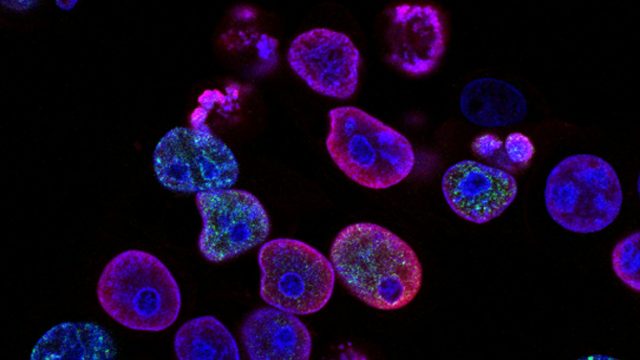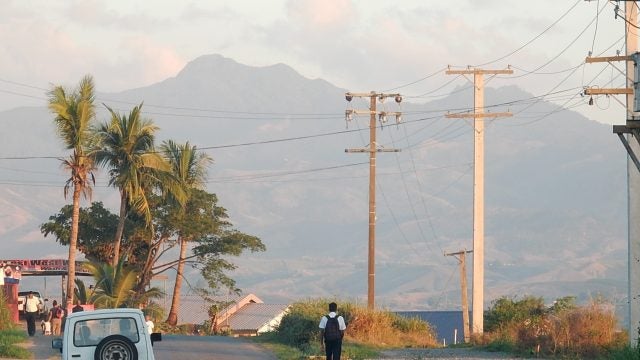Title: How to Design a Co-benefit Framework Between Air Quality Improvement and Climate Policy: The Case of South Korea
The South Korea case study indicates the co-benefits of air quality and climate change policy, by designing relevant legal and institutional frameworks in a more comprehensive and holistic way.
Introduction
Excessive greenhouse gas (GHG) emissions and air pollutants, the by-products of economic activity, create negative externalities at the local and global level. They threaten human health and destroy ecosystems. Despite the largely similar causes and impacts of greenhouse gas emissions and particulate matter (PM), the political implications of climate change and air quality policies differ significantly between regions.
Air quality and climate change have different burden-sharing and impact dimensions. Air quality is predominantly a local issue, and can be improved significantly by regional or national policies. By contrast, climate change is a global issue, and its burdens and gains are adversely shared. Individual countries are not affected by the full weight of climate change and are unable to improve the climate alone. As a result, there are differing political responses to either issue. Air quality issues are more likely to gain consensus from stakeholders, generate public pressure, and lead to political action. Climate change policies, which require both domestic policies and international cooperation with a longer time horizon, are less likely to generate agreement from multiple stakeholders.
Both air quality and climate change have similar drivers, such as the change of energy mix, and can be addressed with similar measures. Focusing on the co-benefit of air quality policies, or the unintended benefits of air quality policies on climate change, is a way to utilize the political strengths of air quality policies to simultaneously benefit the climate.
Domestic Air Quality Policy versus Global Climate Policy in South Korea
When it comes to analyzing the co-benefits of air quality policy on climate change, the relationship between air quality and climate policy can be divided into four groups: (1) positive correlation of policies that positively affect both PM and GHG emission reduction, (2) negative correlation of policies that help reduce PM emissions, but adversely affect GHG emissions or vice-versa; (3) no correlation (neutral, 0); (South Korea not only demonstrates that there is a positive correlation between air quality and climate change policies in reducing both PM and GHG emissions, but it also illustrates the political consensus around air quality policies that make co-benefits a crucial way to address climate change concerns.
South Korea’s air quality policies and its experience enacting them demonstrate that air quality policies can serve climate policy goals. In March 2019, the Seoul Metropolitan Area experienced unprecedented concentrations of PMfor seven consecutive days. On March 1, 2019, the South Korean government imposed emergency reduction measures and the National Assembly called for the establishment of a national organization to address PM and climate change. President Moon Jae-in’s administration in South Korea actively embraced these proposals and officially launched the National Council on Climate and Air Quality (NCCA) on April 29, 2019. Former UN Secretary-General Ban Ki-moon was appointed as NCCA chair.
The NCCA’s air quality policy proposal took a targeted approach. First, it focused on the short-term tasks that could be quickly implemented to generate a drastic reduction in air pollution for the public’s benefit. Then, the tasks that required medium-to-long-term discussions and solutions were developed with active participation from multiple stakeholders such as through public hearings, policy proposals from the public, and other inclusive mechanisms.
In order to drastically reduce the amount of PM in the air between December and March, the months with the highest concentration of PMs, the NCCA introduced a key air quality policy in 2019, called the “seasonal management system of PMs.” The policy introduced restrictions on the operation of coal power plants and high-emitting vehicles in the Seoul Metropolitan Area, an alternating no-driving day system for public sector workers, and special inspections on fine dust emission sources during the peak season of PM concentration from December 2019 to March 2020.
Implementing the seasonal management system of PMs succeeded in significantly lowering particulate matter. For reference, PM10 are particles smaller than 10 micrometers and PM2.5 are particles smaller than 2.5 micrometers. Both have detrimental health impacts, but PM2.5 poses the greatest risk to human health. Twenty-eight coal-fired power plants were shut down in March 2020, while PM10 emissions from the power generation sector drastically decreased by thirty-nine percent from 2019. In the industrial sector, 111 large-scale workplaces voluntarily reduced 2,714 tons of PM emissions. At ports and on ships, 4,565 tons of PM10 emissions were reduced through low-speed operations and reinforced fuel oil standards. In the end, from December 2019 to March 2020 there was a twenty-seven percent reduction of particulate matter compared with the same period the previous year. In addition, the high concentration days also drastically decreased from eighteen to two days (see [Figure 1]).
The example of South Korea demonstrates that policies to improve air quality also prove effective in addressing climate change. Not only that, it highlights how air quality policies are a more politically feasible and popular route for addressing climate change. The political and public support in South Korea for enacting restrictions on PMs came not from a desire to lower greenhouse gas emissions, but to reduce the high levels of particulate matter that were contributing to poor air quality.
 Figure 1: High Concentration periods of PM2.5 in Seoul
Figure 1: High Concentration periods of PM2.5 in Seoul
Source: NCCA.2020. Annual Report
Policy Recommendations
In order to enhance the synergistic effects of co-benefits, the South Korea case study indicates the importance of designing the relevant legal and institutional frameworks in a more comprehensive and holistic way, while enhancing public awareness on environmental issues. In sum, the following are specific factors for policymakers to consider in developing air quality and climate change policies as highlighted by the experience of South Korea.
First, it is important to consider air quality policies with significant co-benefits for climate change. For example, restricting the operation of diesel vehicles, promoting high-efficiency eco-friendly vehicles, energy conversion, and efficiency improvements, and new and renewable energy are cases in which co-benefit effects can be maximized. A coherent and effective co-benefit framework between air quality improvement and climate change actions will optimize outcomes in an efficient manner.
Second, the policy-making and implementation processes should be more transparent and inclusive to encourage participation and feedback from the public. The government should provide a space for multiple stakeholders to be able to present their views and have their concerns addressed, with the goal of building a consensus-based policy. An enhanced dialogue will increase the likelihood of the policy receiving long-term, widespread support in order to effectively manage public goods, such as the environment.
Finally, legal provisions regarding air quality and climate change policy should be integrated. In South Korea, air quality-related legal provisions and climate policy-related ones are not under the same framework of acts or laws. This means that different ministries and agencies have different missions and mandates, which can sometimes be a source of conflict rather than coordination. A comprehensive and integrated legal framework to maximize the co-benefits between air quality improvement and climate policy is highly recommended.
. . .
Tae Yong Jung is a professor at the Graduate School of International Studies (GSIS), and the Director of the Center for Global Sustainability, Yonsei University, South Korea. Before he joined GSIS, he was a professor at the KDI School of Public Policy & Management. He has worked at international organizations such as the Asian Development Bank, the Global Green Growth Institute, the World Bank, and the Institute for Global Environmental Strategies (IGES) of Japan. He started his professional career at the Korea Energy Economics Institute.
50 Yonsei-ro, GSIS, Yonsei University, Seodaemun-gu, Seoul, 03722, South Korea
tyjung00@yonsei.ac.kr
Notes
1. Tae Yong Jung, “Air Quality and Regional Co-operation in South Korea,” Global Asia 14, no.4 (2019): 28-33. https://www.globalasia.org/v14no4/cover/air-quality-and-regional-co-operation-in-south-korea_tae-yong-jung.
+ Ministry of Environment, Republic of Korea, 2020,「The Launch of the National Climate and Environment Conference to address the issue of fine dust under direct control of the president」 [Reference for Press Release; in Korean]. Retrieved from: https://www.me.go.kr/home/web/board/read.do?boardMasterId=1&boardId=978445&menuId=286
2. Government of Korea, 2020, Briefing on Seasonal Management System of Particular Matters (in Korean). http://me.go.kr/home/web/board/read.do?pagerOffset=0&maxPageItems=10&maxIndexPages=10&searchKey=&searchValue=&menuId=286&orgCd=&boardId=1362510&boardMasterId=1&boardCategoryId=&decorator=
3. National Council on Climate and Air Quality, Republic of Korea, 2019, Policy Proposal by the People (in Korean). https://www.ncca.go.kr/cmn/board/BBSMSTR_000000000005/672bbsDetail.do
Recommended Articles

Export controls on AI components have become central tools in great-power technology competition, though their full potential has yet to be realized. To maintain a competitive position in…

The Trump administration should prioritize biotechnology as a strategic asset for the United States using the military strategy framework of “ends, ways, and means” because biotechnology supports critical national objectives…

Fiji, a Pacific Small Island Developing State (PSIDS), faces rural electrification challenges due to its dispersed geography and climate vulnerabilities. With 6 percent of Fijian rural households lacking…